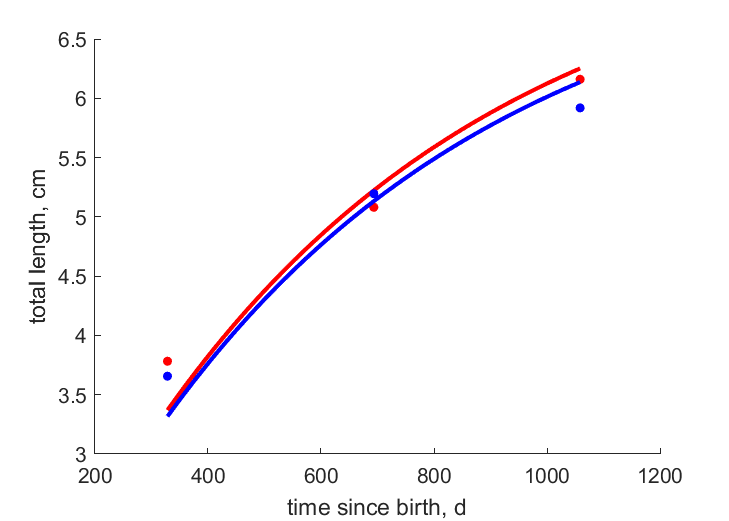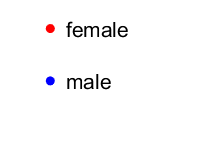Predictions & Data for this entry
| Model: std | climate: Cfa, Cfb | migrate: Mp | phylum: |
| COMPLETE = 2.5 | ecozone: TA | food: biPz, biCi | class: |
| MRE = 0.027 | habitat: 0iFm, 0iFl | gender: D | order: |
| SMSE = 0.002 | embryo: Fs, Fg, Fh | reprod: O | family: |
Zero-variate data
| Data | Observed | Predicted | (RE) | Unit | Description | Reference |
|---|---|---|---|---|---|---|
| am | 1095 | 1095 | (0.0001347) | d | life span | fishbase |
| Lp | 4.99 | 4.999 | (0.00181) | cm | total length at puberty | fishbase |
| Li | 10 | 10.25 | (0.02451) | cm | ultimate total length | fishbase |
| Wwb | 0.000449 | 0.0004512 | (0.004903) | g | wet weight at birth | fishbase |
| Wwp | 0.59 | 0.5896 | (0.0007196) | g | wet weight at puberty | fishbase |
| Wwi | 5.12 | 5.075 | (0.008817) | g | ultimate wet weight | fishbase |
| Ri | 2.877 | 2.881 | (0.001551) | #/d | maximum reprod rate | MiltArth1985 |
Uni- and bivariate data
| Data | Figure | Independent variable | Dependent variable | (RE) | Reference |
|---|---|---|---|---|---|
| tL_f |   | time since birth | total length | (0.04302) | MiltArth1985 |
| tL_m |   | time since birth | total length | (0.04193) | MiltArth1985 |
Pseudo-data at Tref = 20°C
| Data | Generalised animal | Retropinna semoni | Unit | Description |
|---|---|---|---|---|
| v | 0.02 | 0.02264 | cm/d | energy conductance |
| p_M | 18 | 33.03 | J/d.cm^3 | vol-spec som maint |
| k_J | 0.002 | 0.002 | 1/d | maturity maint rate coefficient |
| k | 0.3 | 0.316 | - | maintenance ratio |
| kap | 0.8 | 0.9235 | - | allocation fraction to soma |
| kap_G | 0.8 | 0.8018 | - | growth efficiency |
| kap_R | 0.95 | 0.95 | - | reproduction efficiency |
Discussion
- Males are supposed to differ from females by {p_Am} only
- mod_1: males have equal state variables at b, compared to females
Facts
- length-weight: Ww in g = 0.00389*(TL in cm)^3.12 (Ref: fishbase)
- length-length from photo: SL = 0.87 * TL (Ref: fishbase)
Bibliography